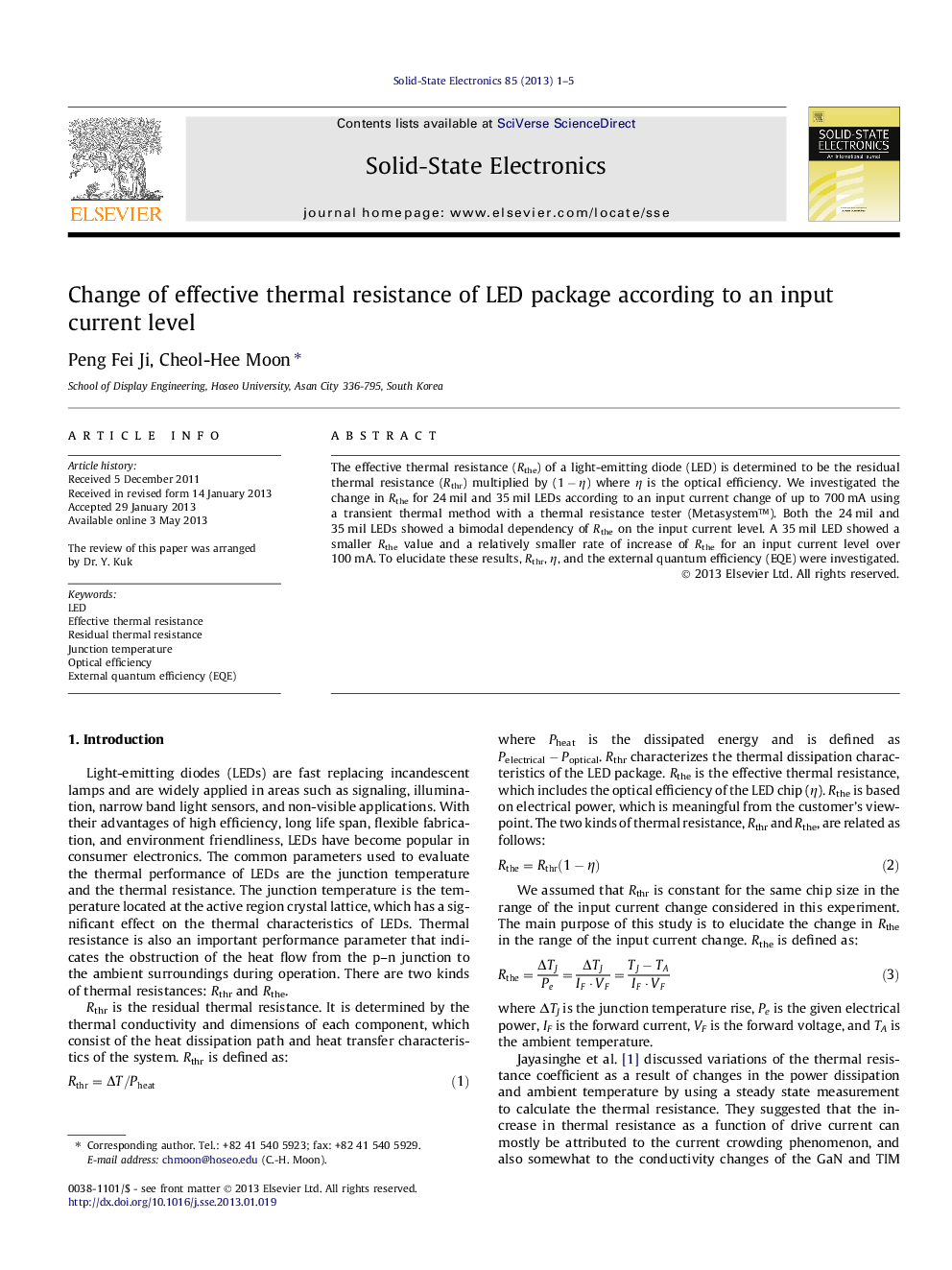| Article ID | Journal | Published Year | Pages | File Type |
|---|---|---|---|---|
| 748173 | Solid-State Electronics | 2013 | 5 Pages |
The effective thermal resistance (Rthe) of a light-emitting diode (LED) is determined to be the residual thermal resistance (Rthr) multiplied by (1 − η) where η is the optical efficiency. We investigated the change in Rthe for 24 mil and 35 mil LEDs according to an input current change of up to 700 mA using a transient thermal method with a thermal resistance tester (Metasystem™). Both the 24 mil and 35 mil LEDs showed a bimodal dependency of Rthe on the input current level. A 35 mil LED showed a smaller Rthe value and a relatively smaller rate of increase of Rthe for an input current level over 100 mA. To elucidate these results, Rthr, η, and the external quantum efficiency (EQE) were investigated.
► Both the 24 mil and 35 mil LEDs showed a bimodal dependency of Rthe. ► At very low and high carrier densities, the non-radiative and Auger recombinations dominate. ► As a result, the external quantum efficiency (EQE) is degraded. ► The Rthe value was much higher for the 24 mil LED than for the 35 mil LED. This is explained with heat source density.
